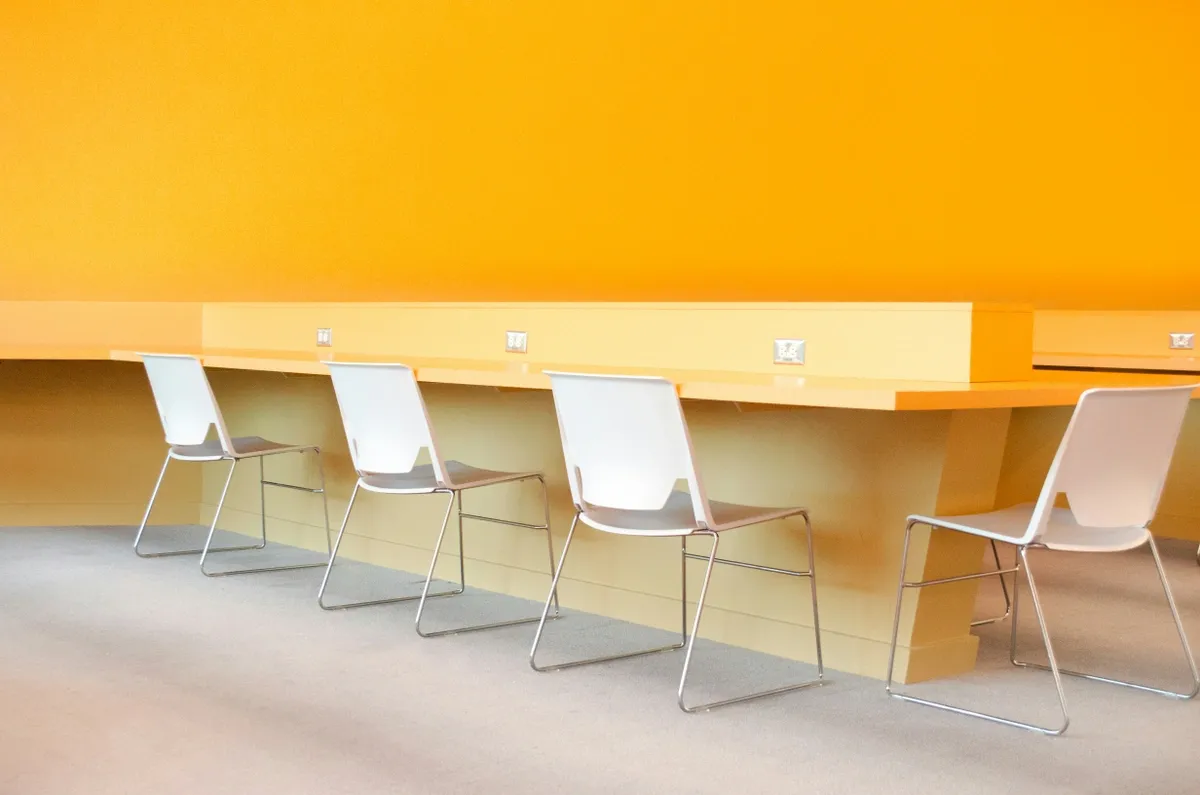
Navigating the complexities of post-pandemic office design requires architecture firms to innovate and adapt to new workplace realities. As hybrid work models become increasingly popular, the need for flexible, health-conscious, and sustainable office environments has never been more critical. This article explores key design strategies that cater to these evolving needs, ensuring that modern office spaces are both functional and conducive to employee well-being.
Hybrid Work Models and Flexible Spaces
Hybrid work models have gained significant popularity in the post-pandemic work environment, with employees splitting their time between the office and remote locations. According to a McKinsey report, remote work is expected to continue, and urban shopping areas will likely remain less frequented than before the pandemic (source). A survey by PwC found that 55% of employees would prefer a hybrid working model post-pandemic (source).
Designing flexible workspaces to accommodate hybrid work models has become crucial. Office design strategies should include zoning spaces for different activities, keeping high-traffic areas separate from workspaces, establishing quiet zones, and setting up designated call rooms (source, source). Movable furniture and modular office layouts are essential for creating adaptable environments that can be easily reconfigured to meet various work styles and needs.
Technological integration is another key aspect of these new workspaces. With the rise of remote work, businesses are adapting their physical office spaces to incorporate technology that supports remote work. This includes creating spaces conducive to video conferencing and other forms of digital collaboration (source).
Moreover, the rise of virtual office designs prioritizes workspace ergonomics, technology integration, and aesthetic appeal. These elements are vital for creating a seamless and efficient remote work environment (source).
In conclusion, the hybrid office model requires businesses to rethink their office design strategies. Modern commercial furniture and thoughtful space planning can help create a hybrid office environment that is safe, agile, and supportive of a thriving team (source).
Health and Safety Considerations
In the post-pandemic era, health and safety in office design are paramount. The transition to new workplace norms requires a comprehensive approach to ensure the well-being of employees and the overall organizational culture (source).
Improved Ventilation and Air Purification Systems
One of the most critical aspects of post-pandemic office design is improving air quality. Enhanced ventilation and air purification systems are essential to minimize the spread of airborne pathogens. Technologies such as non-thermal plasma, which ionizes air to eliminate microbial contaminants, have been recommended by health authorities like the CDC and WHO as effective measures to maintain clean air in office environments (source, source).
Touchless Technology
The pandemic has accelerated the adoption of touchless technologies in workplaces. These innovations, including automatic doors, touch-free faucets, and voice-activated devices, reduce the need for physical contact, thereby lowering the risk of virus transmission. Touchless technology not only enhances health and safety but also streamlines administrative processes and improves overall workplace efficiency (source).
Social Distancing Measures
Implementing social distancing measures is another critical component of post-pandemic office design. This can involve reconfiguring workstations to ensure adequate spacing, installing clear barriers between desks, and creating designated work zones to minimize crowding. Flexible work arrangements, such as shift work schedules, further support social distancing by reducing the number of employees in the office at any given time (source).
Shared spaces, essential for collaboration and social interaction, must also be redesigned to meet new safety requirements. These areas should be adaptable, allowing for easy reconfiguration to maintain physical distancing and adhere to cleaning protocols (source).
In conclusion, addressing health and safety in post-pandemic office design involves a multifaceted approach. By leveraging improved ventilation, touchless technology, and social distancing measures, businesses can create safer and more efficient workplaces that prioritize employee well-being.
Sustainable and Biophilic Design
The importance of sustainability in contemporary office design cannot be overstated. Sustainable office design aims to reduce the environmental impact of buildings by integrating green methods and principles. These include energy-saving technology, the use of sustainable materials, and practices such as recycling and repurposing. Given that the built environment accounts for nearly 40% of global energy consumption and roughly a third of global greenhouse gas emissions, sustainable office design is crucial for reducing these impacts (source).
Sustainable design not only benefits the planet but also creates attractive and functional spaces that improve the human experience. High-performance buildings are cost- and energy-efficient, which can enhance employee performance, productivity, and job satisfaction (source).
Biophilic design is another essential aspect of modern office design, emphasizing our innate connection to nature. This design philosophy goes beyond merely adding plants to an office; it incorporates elements like living walls, natural light, water features, and the use of earth colors. These elements aim to create a work environment that mimics the natural world (source).
The benefits of biophilic design are manifold. Natural elements like plants and sunlight have been shown to improve air quality, reduce stress, and enhance overall mental well-being. This leads to increased creativity, productivity, and employee happiness. Physiological evidence indicates that exposure to natural elements can lower cortisol levels, thereby reducing stress and anxiety (source, source).
Energy-efficient design elements are also crucial for sustainable office spaces. Incorporating features such as insulation, energy-efficient windows, and LED lighting can significantly reduce energy consumption. These measures not only contribute to a healthier environment but also result in long-term cost savings on utilities. An energy-efficient building also enhances occupant comfort by maintaining consistent indoor temperatures and improving air quality (source).
In conclusion, incorporating sustainable and biophilic design principles into office spaces is essential for creating environments that are both eco-friendly and conducive to employee well-being. By utilizing natural materials, maximizing natural light, and implementing energy-efficient elements, architecture firms can develop office spaces that are both functional and sustainable.
How Minute7 Supports Modern Office Design
As architecture firms navigate the complexities of post-pandemic office design, tools that enhance efficiency and streamline operations become indispensable. Minute7 offers a robust time tracking and expense reporting solution that seamlessly integrates with QuickBooks, helping architecture firms manage their projects more effectively.
Minute7’s platform enables architects and their teams to easily track time spent on various design phases and tasks, ensuring accurate billing and better project management. The mobile app allows for on-the-go time and expense entries, which is particularly beneficial for firms that have adopted hybrid work models. This flexibility ensures that all hours worked are tracked, regardless of whether team members are working remotely or on-site.
Additionally, Minute7’s secure data storage and detailed reporting capabilities allow firms to maintain precise records of time and expenses, which is crucial for budgeting and financial planning. The ability to attach receipts and track mileage further simplifies expense reporting, helping firms stay organized and compliant with financial regulations.
In conclusion, as architecture firms embrace new design trends and work models in the post-pandemic era, Minute7 provides the tools needed to manage time and expenses efficiently. By leveraging Minute7’s comprehensive platform, firms can focus on delivering innovative and sustainable office designs while maintaining operational excellence. For more information on how Minute7 can support your architecture firm, visit Minute7.



